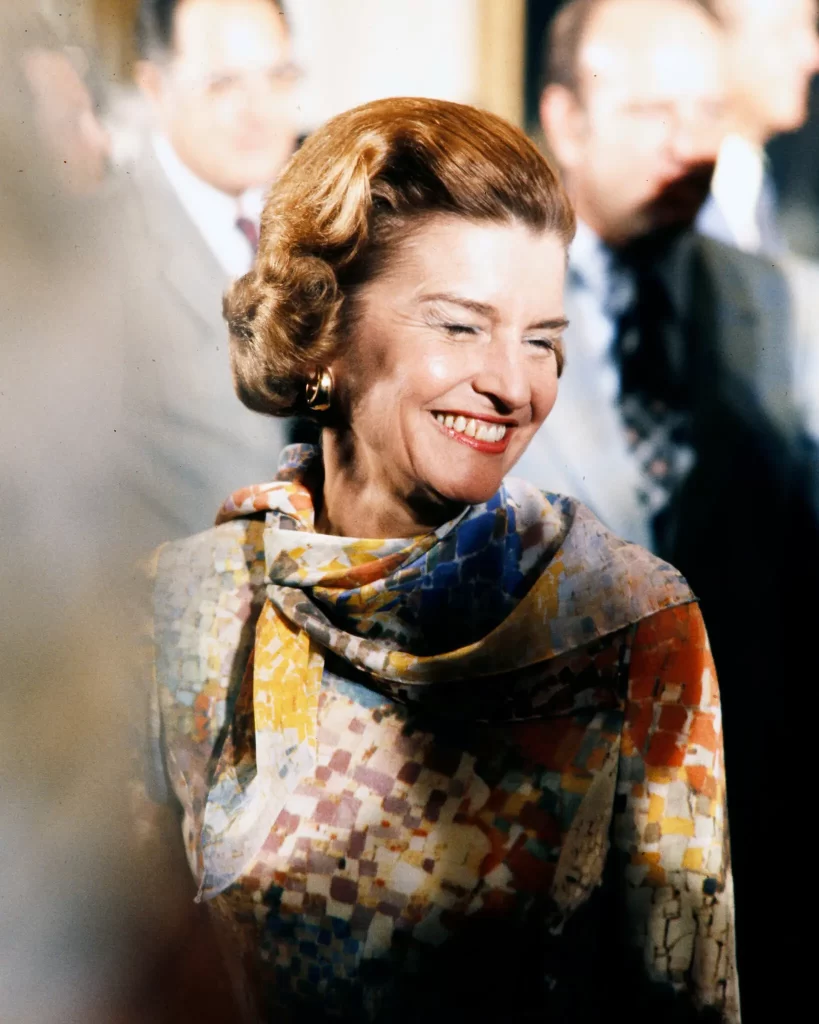Betty Ford was determined not to keep her breast cancer a secret from the American public when she was diagnosed 50 years ago during her time as first lady. As she later remarked, “One day I appeared to be fine, and the next day I was in the hospital for a mastectomy. It made me realize how many women in the country could be in the same situation.”
Mrs. Ford’s candor about her disease — and her subsequent treatment — was a momentous event at a time when breast and other cancers were shrouded in silence and shame. She received over 50,000 pieces of mail at the White House. But her cancer story was far from straightforward. Critics challenged Mrs. Ford, a renowned feminist, for allowing her treatment choices to be dictated by men. And while Mrs. Ford’s case became a clarion call for early detection of breast cancer, we know today that this strategy is not universally beneficial. As with many stories of celebrity illness, Mrs. Ford’s was inspirational but more complicated than usually told.
Mrs. Ford’s tumor, a lump in her right breast, was detected by her doctor during a routine physical examination on Sept. 26, 1974. She was 56 years old. The consulting surgeon at Bethesda Naval Hospital, William Fouty, recommended a traditional radical mastectomy — a disfiguring operation in which a surgeon removed the affected breast as well as the underarm lymph nodes and chest wall muscles on the side of the cancer.
A few renegade surgeons and some women with breast cancer had recently begun to question the logic behind this standard of care, arguing that for more localized cancers, smaller operations, especially ones that left the chest wall muscles in place, were equally good. The right to choose one’s own treatment was becoming a cause among a growing number of feminist breast cancer activists. Although Dr. Fouty mentioned the other options to Mrs. Ford, he also discouraged them. She believed him and later said that she did not seriously consider any alternative.
Upon learning this, one activist, the journalist Rose Kushner, called the White House to try to get Mrs. Ford to reconsider her invasive procedure. Ms. Kushner reached the presidential speechwriter Milton Friedman but intensely disliked his reply. “I am sorry,” he told her. “The president has made his decision.” The fact that the choice was conveyed as the president’s infuriated Ms. Kushner. Incidentally, two days after Mrs. Ford’s surgery, a seminar was held at the nearby National Cancer Institute in which early data from a clinical trial comparing radical mastectomy and a smaller operation for early-stage breast cancer revealed that there was no difference in patient outcomes.
As far as her diagnosis went, Mrs. Ford’s case was not an example of the benefits of finding cancer early. Her tumor was found incidentally on a physical examination, not from a mammogram, and the cancer had already spread to her lymph nodes. Mrs. Ford probably survived her cancer (she died in 2011 at age 93) because she received an early version of chemotherapy.
Nevertheless, Mrs. Ford’s case was used to demonstrate the importance of early detection. In the months and years after her announcement, she avidly encouraged women to get screened, particularly with mammography, which could find smaller, presumably more curable, lesions than a physical exam or breast self-examination.
Women responded enthusiastically to her message. One wrote that she was “one of the many thousands of women” who “tore over” to a local screening site after hearing about Mrs. Ford’s cancer. This surge of interest led to the so-called Betty Ford blip, a roughly 15 percent rise in breast cancer cases in the United States, as so many women were getting screened for the first time.
But the issue of early detection is more complex than was understood at the time. Just as Mrs. Ford survived despite a late diagnosis, other women — with more aggressive tumors — still die despite getting prompt ones. The biology of the cancer plays a major role in survival, not just how early it is discovered.
And while it might seem counterintuitive, searching for earlier cancers may not always be beneficial, particularly in women under 50. For one thing, one must screen 750 to 1,000 women throughout their 40s to save just one life from breast cancer. These other women are much more likely to have false positive results, which lead to unnecessary worry and biopsies. There are also growing calls for other, potentially more precise screening methods like ultrasounds and M.R.I.s for certain women. Thus, while the U.S. Preventive Services Task Force recently recommended regular mammograms for women in their 40s, some breast cancer experts remain concerned that calls for early detection may promise too much.
Mrs. Ford’s bravery and influence remain commendable. But her experience also demonstrates the challenges of celebrity health stories, which can both inform and give false hope. This is especially true for diseases such as breast cancer, for which our understanding continues to evolve. Accounts of famous women with breast cancer appear all over the internet, especially in October, which is Breast Cancer Awareness Month. So do versions from everyday women. Among the most common stories are those in which women report that mammograms saved their lives. While this claim is surely true in some instances, it is probably not in others. The nuances of diagnosis and treatment may be lost as people try to create coherent stories after the fact.
But as in Mrs. Ford’s case, breast cancer stories do not merely disseminate scientific information. Even when the lessons are ambiguous, they still can provide much needed optimism and encouragement in the face of a fearsome disease.
Originally published in the New York Times, October 3, 2024.
